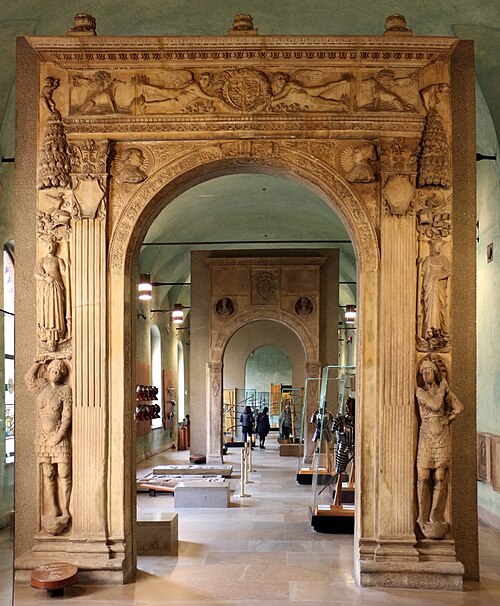The Palazzo del Banco Mediceo, also known simply as Banco Mediceo, was the Medici Bank’s Milanese headquarters. It stood as one of the earliest examples of Lombard Renaissance architecture, reflecting both political diplomacy and architectural innovation.
A Symbol of Peace and Power
Located on Via dei Bossi, in the sestiere di Porta Comasina, the palace once occupied the site where the Teatro alla Scala would later rise.
Pigello Portinari, the Medici representative in Milan, commissioned the palace. His patron, Cosimo de’ Medici, aimed to honor the city and seal an alliance with Francesco Sforza, who had donated a pre-existing structure in 1455. That donation marked a shift in relations between Florence and Milan, putting an end to centuries of enmity.
Construction moved swiftly and the palace was completed by 1459.
Architectural Features and Design
The design of the building survives through an engraving in Filarete’s architectural treatise. The façade combined Tuscan Renaissance innovations with traditional Milanese elements.
Key features included:
- A symmetrical layout
- An ashlar stone base
- A monumental entrance portal
- Paired windows on the piano nobile
- A large classical cornice
Just below the cornice, ceramic roundels added rich detail to the exterior.
Attribution and Artists
The architect is not definitively known. Traditionally, credit goes to Michelozzo, a favored Medici architect. However, recent studies lean toward Filarete, who may have collaborated with local Milanese craftsmen. Despite this, Filarete does not claim authorship in his own writings.
In 1456, the interior decoration began. According to Filarete, Vincenzo Foppa, the leading Lombard painter of the time, created secular frescoes—a rare choice for the period. Only one fragment survives: Child Reading Cicero, now housed in the Wallace Collection in London. Additional works came from Zanetto Bugatto.
Demolition and What Remains
The palace was demolished in the late 18th century to make way for the urban development surrounding Teatro alla Scala.
However, some pieces survived:
- A monumental portal, now preserved at the Museo d’Arte Antica, features intricate Lombard-Tuscan sculptures by Guiniforte Solari and Giovanni Antonio Amadeo.
- Several terracotta tondi with antique-style portraits remain on display at the Pinacoteca del Castello Sforzesco.















